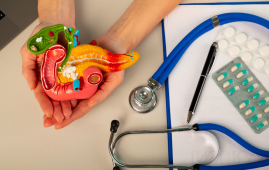

University of Western Ontario researchers have found a potential “super molecule” that can boost the efficiency of various vaccinations against viral infections such as influenza, COVID-19, and smallpox, making a big step forward in vaccine development.
A study led by Western professor Mansour Haeryfar discovered that 5-OP-RU, a vitamin B2-derived chemical produced by bacteria, can improve the efficiency of numerous vaccines for viral illnesses.
The chemical interacts to a protein called MR1 before rousing a population of T lymphocytes known as mucosa-associated invariant T (MAIT) cells—basically, one of the “first responders” that rush to combat infection when a virus invades the body.
The findings, which were recently published in the journal PLOS Pathogens, have important implications for boosting the worldwide response to present and future viral threats.
We need better vaccines to combat viruses of pandemic potential, which are among the most vicious existential threats to human populations,” said Haeryfar, professor of immunology at Western’s Schulich School of Medicine & Dentistry.
“Our strategy of targeting the MR1-MAIT cell axis using 5-OP-RU shows promise in generating strong antiviral immune responses in the body. This strategy could help develop more effective viral vaccines.”
The researchers used a combination of clinically relevant mice models, human cell cultures, and numerous vaccination platforms against diverse influenza, SARS-CoV-2, and smallpox strains for the study. They discovered that 5-OP-RU, in conjunction with antiviral vaccinations, expanded MAIT cells and reprogrammed them to become more potent antiviral entities.
“MAIT cells are often found in the bloodstream and in mucosal tissues, including in our respiratory system, which is often the first place in which many viruses are encountered,” said Haeryfar.
When viruses like flu or SARS-CoV-2 get into our lungs, MAIT cells are already there and ready to fight. They respond quickly to infections, coordinate our immune response, and help destroy virus-infected cells. This makes them very attractive targets in vaccine design strategies.”
In terms of next stages, Haeryfar and his colleagues intend to expand their research to assess the efficacy of 5-OP-RU in a variety of COVID vaccine candidates, including a potential Western-developed COVID-19 vaccine candidate and inhaled vaccinations.
“While mRNA vaccines were and remain potent in reducing the risk of severe morbidity and mortality due to COVID-19, we need more effective vaccines to prevent infection with SARS-CoV-2 variants of concern. We are now looking to investigate the possibility of using 5-OP-RU and potentially other MR1-binding molecules in inhaled vaccines,” he added.
The research also implies that the specific traits of MAIT cells—quick-acting entities with antibacterial and tissue healing properties—could aid in the resolution of secondary bacterial infections and tissue damage following viral infection.
“It is also noteworthy that MAIT cells are evolutionarily conserved. Therefore, the results of preclinical studies are likely to be translatable to the clinic,” said Haeryfar.
“Everyone has the exact same MR1 protein. Therefore, immunization strategies that target MR1 and MAIT cells should work across diverse human populations, regardless of their genetic makeup.”
more recommended stories
 Walking Speed Before Hip Replacement Predicts Recovery
Walking Speed Before Hip Replacement Predicts RecoveryNew Evidence Points to a Simple,.
 Neuroblastoma Drug Combo Extends Survival in Models
Neuroblastoma Drug Combo Extends Survival in ModelsA Promising Shift in High-Risk Neuroblastoma.
 How Soybean Oil Impacts Weight Gain and Metabolism
How Soybean Oil Impacts Weight Gain and MetabolismWhy Soybean Oil May Affect Metabolism.
 Coffee and Cognitive Function: Evidence Review
Coffee and Cognitive Function: Evidence ReviewA new narrative review in Cureus.
 Colorectal Cancer Screening Rates Low in Adults 45–49
Colorectal Cancer Screening Rates Low in Adults 45–49Recent UCLA research reveals that colorectal.
 Gut Immune Cells and Long-Lasting Antiviral Protection.
Gut Immune Cells and Long-Lasting Antiviral Protection.Breakthrough Findings on How Gut Immune.
 Mild Pancreatic Duct Dilatation Signals Higher Cancer Risk
Mild Pancreatic Duct Dilatation Signals Higher Cancer RiskEarly Structural Changes Offer Critical Clues.
 How the Uterus Senses Force During Labor: New Insights
How the Uterus Senses Force During Labor: New InsightsA new study published in Science.
 Fat-Free Mass and Brain Outcomes in Preterm Babies
Fat-Free Mass and Brain Outcomes in Preterm BabiesEarly Fat-Free Mass May Hold the.
 How Hormones Shape Dopamine-Driven Learning
How Hormones Shape Dopamine-Driven LearningNYU Study on Hormones and Cognitive.

Leave a Comment